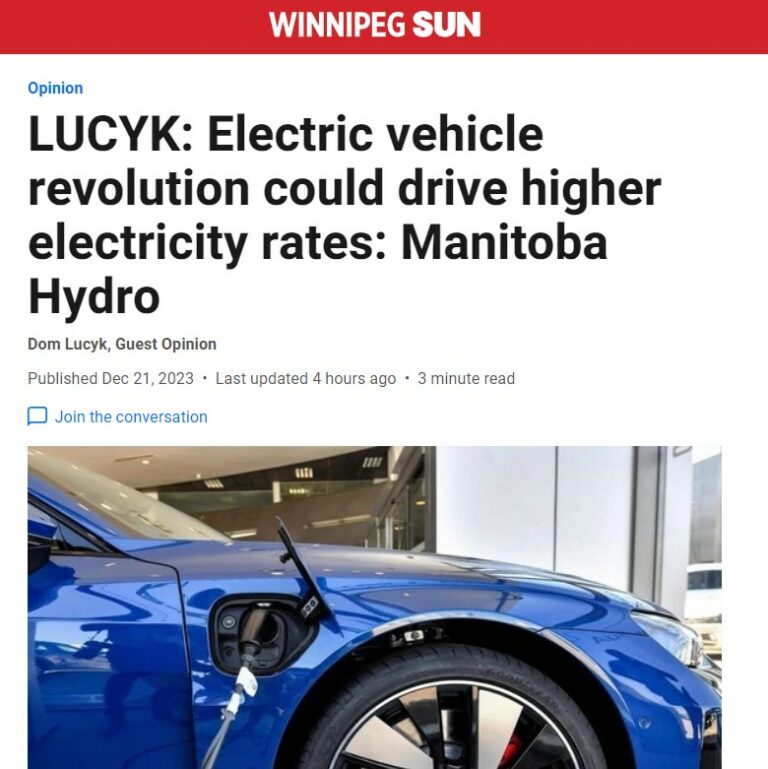WINNIPEG SUN COLUMN: Electric vehicle revolution could drive higher electricity rates

What will the federal government’s ban on gas-powered cars cost you through your hydro bill as the powers that be push everyone towards electric vehicles (EVs)?
It might shock you to learn that nobody really knows the answer.
As you may remember, the federal government announced in 2021 that it would transform transportation in Canada: people would no longer be able to buy new gas-powered vehicles by 2035. While it will allow any ‘zero-emission vehicle’ (ZEV) to be sold past that point, the Trudeau government has heavily pushed electric vehicles as the solution. Not only has Ottawa said Canadians will have “to embrace the change and go electric,” they’re committing over $40 billion in taxpayer dollars into subsidies and incentives for EV battery plants.
A new report from SecondStreet.org examines analysis conducted by provincial governments (who are in charge of the electric grid within their borders) on Ottawa’s plan to phase out gas-powered vehicles. After all, a wave of electric vehicles will require a significant amount of electricity, upgrades to local distribution networks (the power lines and transformers in your community) and expansions to the electrical panels in many homes across the nation.
There’s nothing wrong with wanting to buy an electric car. Competition is a good thing. However, if a wave of Canadians begin driving EVs, it’s important to know ahead of time what the bill looks like.
As it turns out, not one province provided an estimate on how much the average power bill will increase thanks to Ottawa’s policy and the changes needed to make it happen. Manitoba was no exception.
That being said, Manitoba Hydro did provide some interesting insights on what this mandate might mean for everyday Canadians.
First, the money for these upgrades will have to come from somewhere, and, in materials provided to SecondStreet.org, Manitoba Hydro made it clear who will be paying:
“If the utilities/ratepayers are to fund the necessary distribution system upgrades to power EVs then it will result in higher utility charges.”
Second, an increase in power bills will hurt low-income people the most. It’s simple: more of their paycheck goes toward paying utility bills. If utility bills go up, low-income people will feel the squeeze the hardest. Manitoba Hydro acknowledged this as well.
Thirdly, there are a number of other challenges with replacing gas-powered cars with EVs that aren’t related to cost. One particularly relevant example is that EV batteries lose a lot of range in cold temperatures. The Ontario government puts the figure at around 50%. For someone living in Dauphin who wants to head into Winnipeg for some shopping or a Jets game in January, that could be a serious problem. It’s been known to get chilly in Manitoba every now and then.
Until the cost of this change is calculated for each province, and communicated with Canadians, it would be responsible for the federal government to put a pause on its electric vehicle push. The federal government could take the time to do its homework, then let Canadians know just how much they’ll have to pay for the needed upgrades to the province’s electricity system. After that, people can decide for themselves if they still support the policy.
Would you buy a new house or make any other major purchase without knowing the price? The answer is probably ‘no.’ So why is Ottawa committing to the EV mandate without any clue of the price tag?
Dom Lucyk is the Communications Director with SecondStreet.org, a Canadian think tank.
This column was originally published in The Winnipeg Sun on December 21, 2023.
You can help us continue to research and tell stories about this issue by making a donation or sharing this content with your friends. Be sure to sign up for our updates too!


